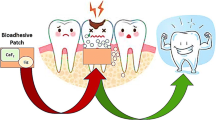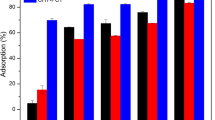Abstract
Periodontal diseases are inflammatory disorders caused primarily by dental plaque microorganisms that even may need surgery to remove damaged tissue. Adhesive biocompatible films may be an adequate form in order to improve drug retention or prevent microbial infections by covering the surgical site. In recent years, much attention has been focused on biocompatible inexpensive polymers, for biomedical and pharmaceutical potential applications. The objective of this research is the development of a film for mucosal application containing lidocaine hydrochloride (5%, w/w) as anesthetic drug. Lidocaine films were prepared with three biopolymers: hydroxypropylmethylcellulose (HPMC), chitosan (CH), or xanthan gum (XG). Their thickness and uniformity content were characterized. Rheological behavior of the hydrated films was studied using flow curves, creep and recovery tests and dynamic oscillatory measurements with a rheometer. The mucoadhesive assays were carried out with cheeks of Wistar rat using a universal tensile tester to know their adhesiveness. Finally, lidocaine delivery through the films was investigated in Franz cells. All films (n = 3 for each polymer) showed flexibility, a drug content of 0.015 ± 0.001 g/cm2 and a thickness of 0.25 ± 0.01 mm. The results of the maximum detachment force in tensile tests and work adhesion indicated that XG is the polymer that showed greater power of mucoadhesion (p < 0.05). These properties show a good correlation with the rheological characteristics. In all cases, the lidocaine amount released at 30 min is around 4 mg/cm2. This amount could be considered sufficient to guarantee the anesthetic effect.



Similar content being viewed by others
References
Albandar JM. Epidemiology and risk factors of periodontal diseases. Dent Clin N Am. 2005;49:517–32.
Silk H. Diseases of the mouth. Prim Care Clin Off Pract. 2014;41:75–90.
Cummins D, Creeth JE. Delivery of antiplaque agents from dentifrices, gels, and mouth washes. J Dent Res. 1992;71:1439–49.
Paderni C, Compilato D, Giannola LI, Campisi G. Oral local drug delivery and new perspectives in oral drug formulation. Oral Surg Oral Med Oral Pathol Oral Radiol. 2012;114:25–34.
Montenegro-Nicolini M, Morales JO. Overview and future potential of buccal mucoadhesive films as drug delivery systems for biologics. AAPS PharmSciTech. 2017;1;18:3–14.
Martin P, Hopkinson-Wooley J, McClusky J. Growth factors and cutaneous wound repair. Prog Growth Factor Res. 1992;4:25–34.
https://www.aemps.gob.es/cima/pdfs/es/p/69789/Prospecto_69789.html.pdf.
Padula C, Pozzetti L, Traversone V, Nicoli S, Santi P. In vitro evaluation of mucoadhesive films for gingival administration of lidocaine. AAPS PharmSciTech. 2013;14:1279–83.
Cheung RandyChiFai, Ng TziBun, Wong JackHo, Chan WaiYee. Chitosan: an update on potential biomedical and pharmaceutical applications. Mar Drugs. 2015;13:5156–86.
Elizalde-Peña EA, Zarate-Triviño DG, Nuño-Donlucas SM, Medina-Torres L, Gough JE, Sanchez IC, et al. Synthesis and characterization of a hybrid (chitosan-g-glycidyl methacrylate)–xanthan hydrogel. J Biomater Sci Polym Ed. 2013;24:1426–42.
Bebawy LI, Elghobashy MR, Abbas SS, Shokry RF. Chromatographic determination of aminoacridine hydrochloride, lidocaine hydrochloride and lidocaine toxic impurity in oral gel. J Chromatogr Sci. 2016;54:492–9.
Corrias F, Dolz M, Herraez M, Diez-Sales O. Rheological properties of progesterone microemulsions: influence of xanthan and chitosan biopolymer concentration. J Appl Polym Sci. 2008;110:1225–35.
Mura C, Nácher A, Merino V, Merino-Sanjuan M, Carda C, Ruiz A, Manconi M, Loy G, Fadda AM, Díez-Sales O. N-Succinyl-chitosan systems for 5-aminosalicylic acid colon delivery: In vivo study with TNBS-induced colitis model in rats. Int J Pharm. 2011;416:145–54.
Siepmann J, Peppas N. Mathematical modeling of controlled drug delivery. Adv Drug Del Rev. 2001;48:137.
Mezger TG. The rheology handbook. 4th ed. Hanover: Vincentz Network; 2014.
Sittikijyothin W, Torres D, Gonçalves MP. Modelling the rheological behaviour of galactomannan aqueous solutions. Carbohyd Polym. 2005;59:339–50.
Barnes HA. A handbook of elementary rheology. Aberystwyth: University of Wales, Institute of Non-Newtonian Fluid Mechanics; 2000.
Korhonen M, Lehtonen J, Hellen L, Hirvonen J, Yliruusi J. Rheological properties of three component creams containing sorbitan monoesters as surfactants. Int J Pharm. 2002;247:103–14. 24.
Dolz M, Corrias F, Díez-Sales O, Casanovas A, Hernández MJ. Influence of test times on creep and recovery behavior of xanthan gum hydrogels. Appl Rheol. 2009;19:34201–8.
Remuñán-López C, Portero A, Vila-Jato JL, Alonso MJ. Design and evaluation of chitosan/ethylcellulose mucoadhesive bilayered devices for buccal drug delivery. J Control Release. 1998;55:143–52.
Casanovas A, Herraez M, Diez-Sales O, Dolz M, Hernández MJ. Rheological characterization of chitosan matrices: influence of biopolymer concentration. J Appl Polym Sci. 2007;105:2121–8.
Xu Fen, Hu Honghai, Liu Qiannan, Dai Xiaofeng, Zhang Hong. Rheological and microstructural properties of wheat flour dough systems added with potato granules. Int J Food Prop. 2017;20:1145–57.
Njintang NY, Mbofung CMF, Moates GK, Parker ML, Faulds CB, Craig F, Smith AC, Waldron KW. Functional properties of five varieties of taro flour, and relationship to creep recovery and sensory characteristics of achu (taro-based paste). J Food Eng. 2007;82:114–20.
Na Nafee, Ismail FA, Boraie NA, Mortada LM. Mucoadhesive delivery systems. II. Formulation and in-vitro/in-vivo evaluation of buccal mucoadhesive tablets containing water-soluble drugs. Drug Dev Ind Pharm. 2004;30:995–1004.
Salamat-Miller N, Chittchang M, Johnston TP. The use of mucoadhesive polymers in buccal drug delivery. Adv Drug Deliv Rev. 2005;57:1666–91.
Akilbekova D, Shaimerdenova M, Adilov S, Berillo D. Biocompatible scaffolds based on natural polymers for regenerative medicine. Int J Biol Macromol. 2018;114:324–33.
Koffi AA, Agnely F, Besnard M, Kablan Brou J, Grossiord JL, Ponchel G. In vitro and in vivo characteristics of a thermogelling and bioadhesive delivery system intended for rectal administration of quinine in children. Eur J Pharm Biopharm. 2008;69:167–75.
Mughal MA, Iqbal Z, Neau SH. Guar gum, xanthan gum, and HPMC can define release mechanisms and sustain release of propranolol hydrochloride. AAPS PharmSciTech. 2011;12:77–87.
Khutoryanskiy VV. Advances in mucoadhesion and mucoadhesive polymers. Macromol Biosci. 2011;11:748–64.
Bhardwaj TR, Kanwar M, Lal R, Gupta A. Natural gums and modified natural gums as sustained-release carriers. Drug Dev Ind Pharm. 2000;26:1025–38.
Rowe DJ, Weyant R. Power toothbrushes may reduce plaque gingivitis at least as effectively as manual toothbrushing. J Evid Based Dent Pract. 2005;5:139–40.
Carafa M, Marianecci C, Di Marzio L, Rinaldi F, Meo C, Matricardi P. A new vesicle-loaded hydrogel system suitable for topical applications: preparation and characterization. J Pharm Sci. 2011;14:336–46.
Shiledar RR, Tagalpallewar AA, Kokare CR. Formulation and in vitro evaluation of xanthan gum-based bilayered mucoadhesive buccal patches of zolmitriptan. Carbohydr Polym. 2014;101:1234–42.
Ceulemans J, Vinckier I, Ludwig A. The use of xanthan gum in an ophthalmic liquid dosage form: rheological characterization of the interaction with mucin. J Pharm Sci. 2002;91:1117–27.
Bhowmik M, Kumari P, Sarkar G, Bain MK, Bhowmick B, Mollick MM. Effect of xanthan gum and guar gum on in situ gelling ophthalmic drug delivery system based on poloxamer-407. Int J Biol Macromol. 2013;62:117–23.
Vermani K, Garg S, Zaneveld Lourens JD. Assemblies for in vitro measurement of bioadhesive strength and retention characteristics in simulated vaginal environment. Drug Dev Ind Pharm.2004;28(9):995–1004.
Andrew GP, Laverty TP, Jones DS. Mucoadhesive polymer platforms for controlled drug delivery. Eur J Pharm Biopharm. 2009;71:505.
List T, Mojir K, Svensson P, Pigg M. A new protocol to evaluate the effect of topical anesthesia. Anesth Prog. 2014;61:135–44.
Luo C, Yang Q, Lin X, Qi C, Li G. Preparation and drug release property of tanshinone IIA loaded chitosan-montmorillonite microspheres. Int J Biol Macromol. 2019;15:721–9.
Author information
Authors and Affiliations
Corresponding author
Ethics declarations
Conflict of interest
The authors declare that they have no conflict of interest.
Additional information
Publisher’s note: Springer Nature remains neutral with regard to jurisdictional claims in published maps and institutional affiliations.
Rights and permissions
About this article
Cite this article
Pleguezuelos-Villa, M., Nácher, A., Hernández, M.J. et al. A novel lidocaine hydrochloride mucoadhesive films for periodontal diseases. J Mater Sci: Mater Med 30, 14 (2019). https://doi.org/10.1007/s10856-018-6213-7
Received:
Accepted:
Published:
DOI: https://doi.org/10.1007/s10856-018-6213-7




